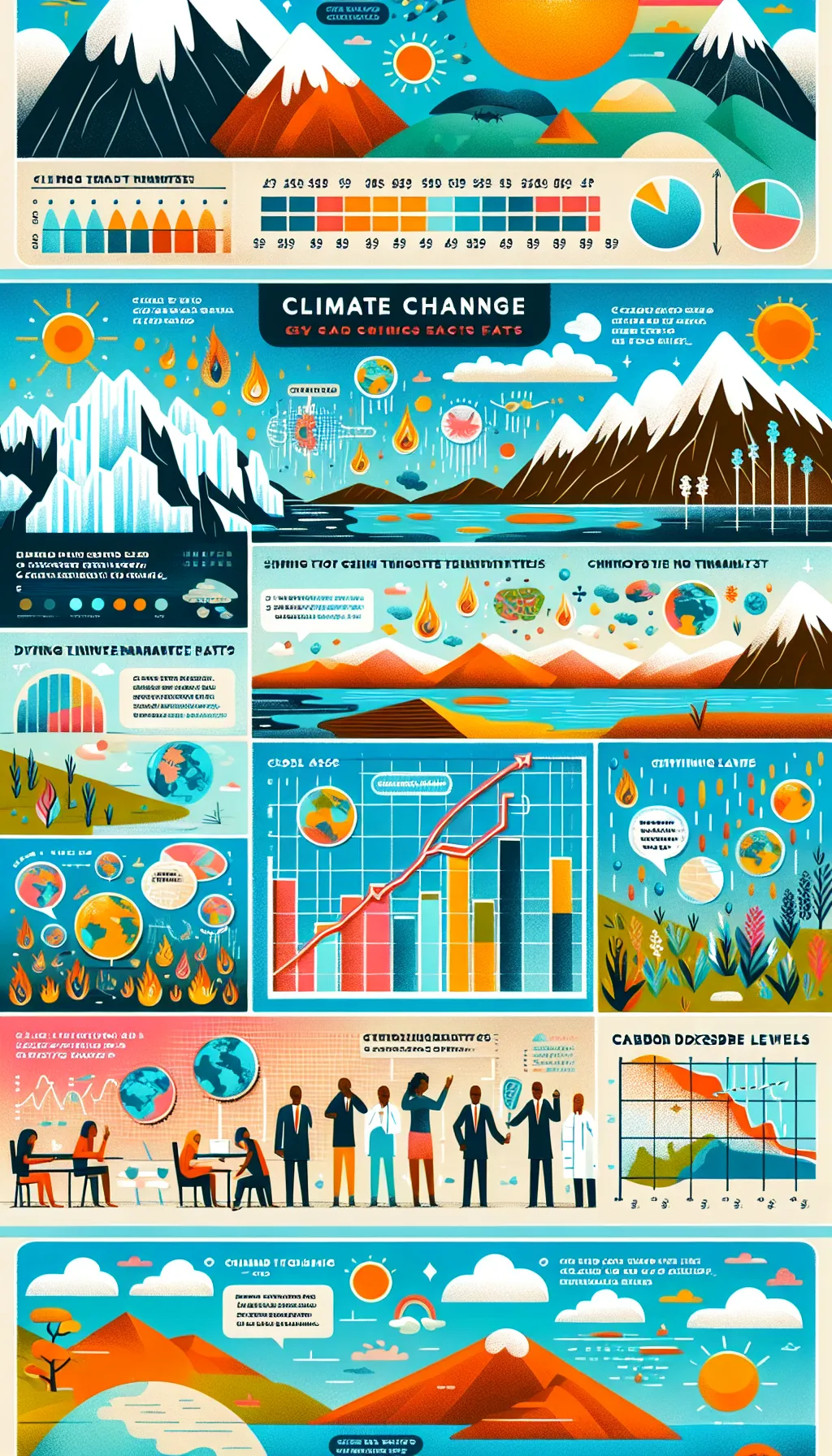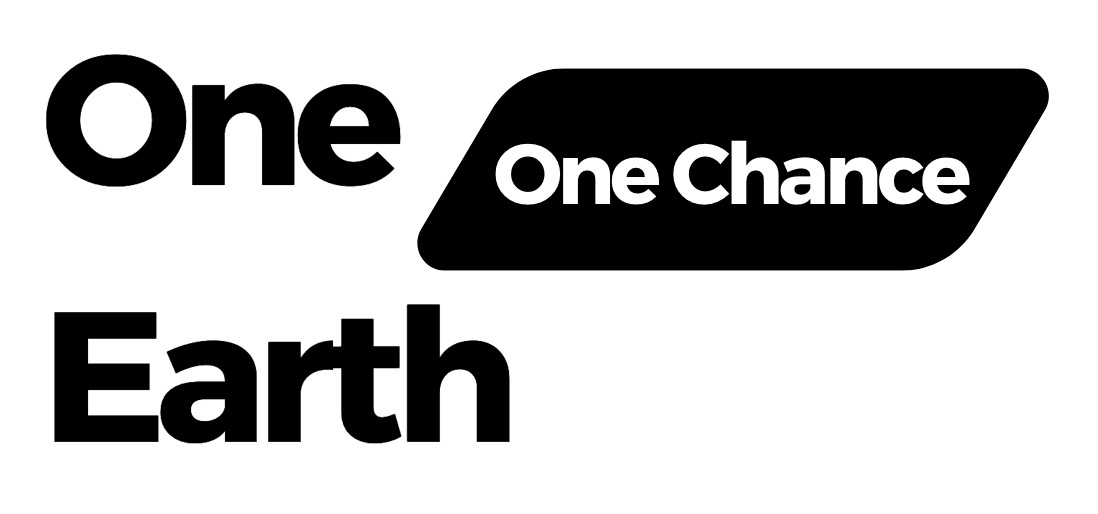Global Warming Facts

Global Warming Facts
Here are 80 essential global warming facts:
1. The Earth's climate is changing due to human activities, primarily the burning of fossil fuels and deforestation.
2. Global temperatures have risen by approximately 1 degree Celsius since the pre-industrial era.
3. The concentration of carbon dioxide (CO2) in the atmosphere has reached its highest levels in at least 800,000 years.
4. Rising CO2 levels are causing ocean acidification, which threatens marine ecosystems.
5. The Arctic is warming at a rate twice as fast as the global average, leading to the melting of glaciers and sea ice.
6. Extreme weather events, such as hurricanes, heatwaves, and droughts, are becoming more frequent and intense.
7. Rising sea levels are threatening coastal communities and ecosystems.
8. Global warming disproportionately affects vulnerable populations, including the poor, children, and indigenous communities.
9. The impacts of climate change include food and water scarcity, increased disease transmission, and displacement of populations.
10. Renewable energy sources, such as solar and wind power, are essential for reducing greenhouse gas emissions.
11. Transitioning to a low-carbon economy can create new jobs and economic opportunities.
12. Forests play a crucial role in absorbing CO2, making deforestation a significant contributor to climate change.
13. The loss of biodiversity is closely linked to climate change, as ecosystems struggle to adapt to changing conditions.
14. Global warming can exacerbate conflicts and migration due to resource scarcity and political instability.
15. The Paris Agreement is an international effort to combat climate change by limiting global warming to well below 2 degrees Celsius.
16. Climate models project that without significant action, global temperatures could rise by 3-4 degrees Celsius by the end of the century.
17. The transportation sector is a major contributor to greenhouse gas emissions and requires sustainable alternatives.
18. The agricultural sector is both affected by and contributes to climate change, highlighting the need for sustainable farming practices.
19. Methane, a potent greenhouse gas, is released during the production and transport of coal, oil, and natural gas.
20. Individual actions, such as reducing energy consumption and supporting sustainable practices, can make a significant difference in addressing climate change.
21. The Earth's average surface temperature is expected to continue rising, leading to more severe and frequent heatwaves.
22. Melting glaciers and ice sheets contribute to rising sea levels, which threaten coastal cities and low-lying areas.
23. Climate change can disrupt ecosystems and lead to the extinction of plant and animal species.
24. The burning of fossil fuels releases not only CO2 but also other greenhouse gases like methane and nitrous oxide.
25. The agriculture and livestock sectors are responsible for a significant portion of global greenhouse gas emissions.
26. Climate change can impact global food security by reducing crop yields and increasing the occurrence of pests and diseases.
27. The warming of the oceans is causing coral bleaching, endangering coral reefs and the marine life they support.
28. The Intergovernmental Panel on Climate Change (IPCC) provides the most comprehensive scientific reports on climate change.
29. Global warming can exacerbate air pollution, leading to respiratory and cardiovascular health issues.
30. The Earth's climate has experienced natural variations throughout history, but the current changes are occurring at an unprecedented rate.
31. The loss of permafrost due to warming temperatures can release large amounts of stored carbon, further amplifying climate change.
32. Global warming can affect the timing and patterns of rainfall, leading to more frequent and intense droughts in some regions.
33. Rising temperatures can increase the risk of wildfires and lengthen the fire season in many parts of the world.
34. Climate change can disrupt ocean currents and weather patterns, potentially leading to shifts in regional climates.
35. The warming of the oceans can lead to more frequent and intense tropical storms and hurricanes.
36. Global warming can have economic impacts, including damage to infrastructure, increased healthcare costs, and decreased productivity.
37. The aviation industry is a significant contributor to greenhouse gas emissions, particularly due to aircraft fuel consumption.
38. Climate change can affect human mental health, leading to increased stress, anxiety, and depression.
39. The loss of ice reflects less sunlight back into space, further contributing to global warming in a positive feedback loop.
40. Climate change can affect the availability and quality of freshwater resources, leading to water scarcity and conflicts.
41. The ocean absorbs about 30% of the CO2 released into the atmosphere, leading to ocean acidification.
42. Climate change can disrupt the timing of seasonal events, such as blooming flowers and bird migrations.
43. The loss of ice in polar regions contributes to rising sea levels, but melting icebergs do not directly cause sea level rise.
44. Climate change can lead to shifts in the geographic distribution of species as they move to more suitable habitats.
45. The warming of the Earth's surface can lead to the release of additional greenhouse gases from natural sources like permafrost and wetlands.
46. Global warming can impact human nutrition, as rising CO2 levels can reduce the nutritional value of some staple crops.
47. The frequency and severity of heatwaves are projected to increase, posing risks to human health and vulnerable populations.
48. Climate change can alter precipitation patterns, leading to more intense rainfall events and increased flood risks.
49. The melting of Arctic sea ice reduces the albedo effect, which contributes to further warming of the region.
50. Climate change can disrupt ocean circulation patterns, potentially affecting global weather systems.
51. The insurance industry faces increasing costs due to climate-related damages and extreme weather events.
52. Climate change can lead to the loss of cultural heritage and archaeological sites due to sea-level rise and increased erosion.
53. The melting of glaciers can impact water availability for downstream communities that rely on glacial meltwater.
54. Global warming can increase the risk of infectious diseases, including vector-borne diseases like malaria and dengue fever.
55. The energy sector is the largest contributor to global greenhouse gas emissions, highlighting the need for clean energy transitions.
56. Climate change can affect the productivity and distribution of crops, potentially leading to food price increases and food insecurity.
57. The loss of sea ice habitat threatens iconic Arctic species like polar bears and walruses.
58. Climate change can impact global economic stability through disruptions in supply chains and increased financial risks.
59. The warming of the oceans can lead to the expansion of oxygen-depleted dead zones, harming marine life.
60. Climate change can have cascading effects on ecosystems, as changes in one species can impact the entire food web.
61. Climate change can impact global economic stability through disruptions in supply chains and increased financial risks.
62. The warming of the oceans can lead to the expansion of oxygen-depleted dead zones, harming marine life.
63. Climate change can have cascading effects on ecosystems, as changes in one species can impact the entire food web.
64. The loss of Arctic sea ice can affect the migratory patterns and reproductive success of marine mammals, such as seals and whales.
65. Climate change can lead to changes in rainfall patterns, affecting water availability for agriculture and freshwater ecosystems.
66. Rising temperatures can increase the frequency and severity of heat-related illnesses and deaths.
67. Climate change can affect the productivity and quality of forests, impacting timber supply and carbon sequestration.
68. The melting of permafrost can release ancient organic matter, potentially leading to increased greenhouse gas emissions.
69. Climate change can disrupt coastal ecosystems, including coral reefs, mangroves, and seagrass beds, which provide essential services.
70. Rising temperatures can increase the risk of pests and diseases in agricultural systems, affecting crop yields.
71. Climate change can lead to changes in ocean currents, potentially impacting global weather patterns and regional climates.
72. The increased frequency and intensity of droughts can lead to water scarcity, agricultural losses, and ecosystem degradation.
73. Climate change can exacerbate social inequalities, as marginalized communities often face the greatest impacts and have fewer resources to adapt.
74. Rising sea levels can lead to saltwater intrusion into freshwater systems, affecting drinking water supplies and agriculture.
75. Climate change can disrupt the natural timing and abundance of blooms, impacting pollinators and plant reproduction.
76. The loss of coastal wetlands and mangroves due to sea-level rise reduces natural buffers against storm surges and coastal erosion.
77. Climate change can lead to changes in ocean chemistry, affecting the health and survival of marine organisms, including shellfish and coral reefs.
78. Rising temperatures can increase the risk of wildfires, threatening ecosystems, human lives, and property.
79. Global warming can lead to shifts in species' geographic ranges, potentially increasing competition and altering ecological dynamics.
80. The melting of mountain glaciers can impact downstream water availability for millions of people who rely on glacial melt for drinking water and agriculture.
Global Warming Facts
One Earth One Chance
www.oneearthonechance.com
Please Share this website with everyone you know.
